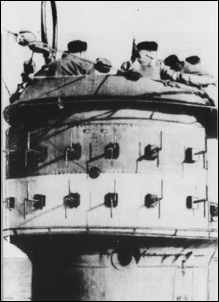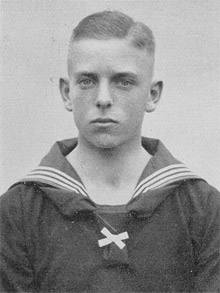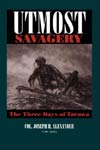FMG 41G (gU) Seetakt
FuMO 29 Seetakt
The original version of the Seetakt radar was developed by Gema(Gesellschaft fu"r Elektroakustische Mechanische Apparate. A Navy-sponsored firm set up by admiral Mertens, by coincidence a WWI U-boat commander) in 1935 as one of the first operational German radars. It operated on 82cm, and its antenna was an array of horizontal or vertical dipoles. Versions of Seetakt were used on land or carried by surface ships, such as the 'Graf Spee' and 'Bismarck'.
 After two abortive attempts to construct a radar small enough
to be fitted in an U-Boot, Gema in 1941 produced a version of
Seetakt small enough to be installed in the conning tower. Two
horizontal rows of vertical dipoles were installed in a half-circle,
following the curve of the conning tower, and the transmitter was
installed next to the conning tower ladder -- a location which
guaranteed that it was flooded with water nearly every time the
hatch was opened! It had a maximum range of about 7km, with a
field of view of 60 degrees.
After two abortive attempts to construct a radar small enough
to be fitted in an U-Boot, Gema in 1941 produced a version of
Seetakt small enough to be installed in the conning tower. Two
horizontal rows of vertical dipoles were installed in a half-circle,
following the curve of the conning tower, and the transmitter was
installed next to the conning tower ladder -- a location which
guaranteed that it was flooded with water nearly every time the
hatch was opened! It had a maximum range of about 7km, with a
field of view of 60 degrees.
It was fitted to U-156, U-157 and U-158, all Type IXC U-boats. It was generally unsuccessful.
In 1942 the antenna array was replaced with one fitted on a retractable, rotating mast. A reflector shield was installed behind the dipoles, and the "W-Anz. g2 (FuMB 9) Cypern II" radio detection system was installed on the other side. The mast was stored in a compartment on the side of the conning tower. Little is known about the effectiveness of this system.
FMG 42 G (gU)
FuMO 30
This was an improved version of the rotating mast version of FMG 41G (gU), with a direction finder added, ready in late 1942. It was built into all U-boats. However, it was easily disabled by depth charges or bombs, and the antennas corroded in the salt water. Commanders did not like to use it, because they feared that it gave away their position.
FuMO 61 Hohentwiel U
FuMO 65 Hohentwiel U1
Hohentwiel was developed for installation in aircraft, to be used against surface ships. The first working radar in this series appeared in September 1942, and from August 1943 onwards the radar was installed in naval reconnaissance aircraft such as the Fw 200 and He 177. Hohentwiel radars operated on 550MHz (55cm), and later models were tunable between 525 and 575MHz.
In 1943 Lorentz was instructed to adapt Hohentwiel for naval use, and soon Hohentwiel appeared on U-boats, small surface ships, and coastal installations. These Hohentwiel radars contained only 19 valves and, by the standards of the time, were easy to maintain and reliable. The U-Boat FuMO 61 version had a 1 by 1.4 meter rotating antenna (again an array of dipoles) on a mast. Size of the antenna and height of the mast were restricted by installation on an U-boot, and range was 10km against ships and 20km against aircraft; installations on surface ships had double that range. Resolution was about 3 degrees, and at short range its range accuracy was 100 meters.
FuMO 65 replaced the traditional radar display, which had separate oscilloscope screens indicating range and azimuth, by a PPI (Plan Position Indicator) screen, known to the Germans as 'Drauf'. This is kind of radar display most familiar to us today, a circular display on which the position of a target is directly indicated as the radar beam sweeps round. FuMO 65 was installed in only a few Type XXI submarines. It was considered a very useful piece of equipment, especially for navigation in coastal waters.
FuMO 83 Berlin U I
FuMO 84 Berlin U II
The Berlin series of centimetric (9cm) radars, built by Telefunken, was based on the British development of the cavity magnetron, as found in a British bomber shot down near Rotterdam on 3 February 1943. This was a painful surprise for the Germans. Not only were they far behind in the development of centimetric radar, they had just abandoned it, in the belief that it would not be effective. Tests of the captured radar, code named Rotterdam, revealed its performance, and it was quickly copied under the name 'Berlin'. As was typical, the German copy was better engineered than its British equivalent, and thus considerably lighter and smaller.
FuMO 83 had four ceramic stub antennas (whatever those are?) in a plastic sphere, which was again installed on top of a rotating mast. It could be used for panoramic scanning or for direction finding. The system was tested on an U-Boot (alas it is not said which one!), and gave a view as "from a balloon 200 metres above the boat", according to its skipper.
FuMO 84 was the final version, which did not use a retractable mast. The system never went into production.
Ballspiel
Ballspiel was a gunnery radar for U-boats. Like most German radars at the end of the war, it was a development of Berlin. It had a range of 25km, but for practical gunnery only 8km was used. It had an azimuth accuracy of about 1 degree and a range accuracy of 500 meters. It is known that Ballspiel was used in active service, but there are no data about its effectiveness.
Devices not covered here include Wanze, Fliege, Bali, Samon and others.
Sources
- The Radar War -- Germany's Pioneering Achievement 1940-45
David Pritchard, published by Patrick Stephens Limited, 1989. - Avionics -- The Story and technology of aviation electronics
Bill Gunston, published by Patrick Stephens Limited, 1990. - The Tsetse and the U-boat
Roy Nesbit, in Aeroplane Monthly, May and June 1991.
Selected media links
|
|




